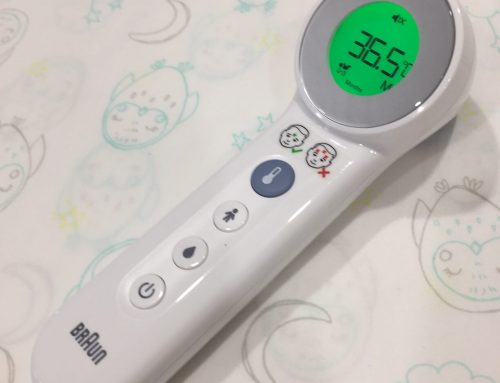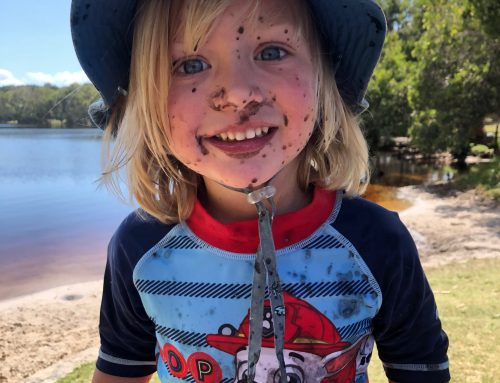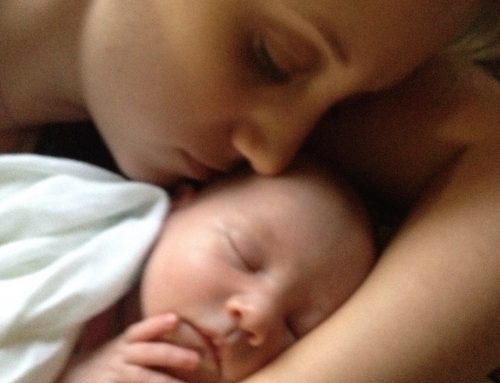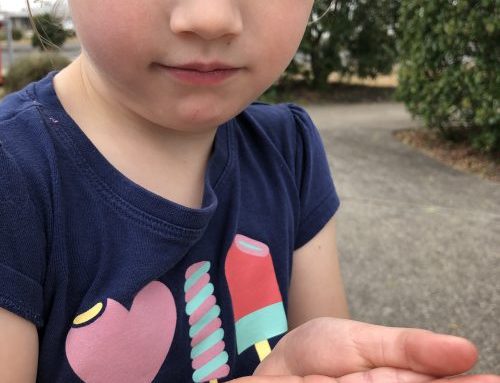The thing is all babies are designed to be kissable, and huggable. It’s all part of the kindchenschema, a word that describes the face of a baby that we intrinsically find appealing at a very deep level. The big head, the enormous clear eyes, the button nose, small chin, cupid lips, chubby cheeks and soft skin all converge to make a pattern that specifically triggers in our brain feelings of love and the need to protect.
The softness and smoothness of the skin is an intrinsic part of it. Their skin is finer, with a thinner more fragile outer layer. That fineness provides the most sensitive organ of communication for your baby. They rely on and relish tactile sensation especially with the body of their mother. Right from the moment of birth, babies have been observed to calm when placed on their mother. Then, without help and if not interfered with, they will actually crawl up their mother’s body and find and attach to her breast. But as this process takes on average about an hour and a half, most mothers will instinctively help their baby to their breast to start them feeding.
This close contact lays the groundwork for transitioning the baby from life inside to outside the womb. It stabilises the baby’s respiratory pattern, temperature, blood glucose and relieves the stress of such a big change. Then as time goes on it teaches the baby about security, safety, love and calmness. Mother also gains confidence about handling and managing her baby and it enhances the ease and the longevity of her breastfeeding. Both parties also learn and benefit from the pleasure that each induces in the other.
- But there is a downside in the delicacy of the baby’s skin. The thinness of both the epidermis and dermis underneath means the skin is more susceptible to rashes especially in the nappy area. There the baby’s stool acts on urine producing ammonia that can cause irritation. Baby stool, especially in breastfed babies, is full of acidic excretion products that can cause literal burns. These should be treated as such, with barrier creams to prevent them, and exposure to air and applications of mild steroid creams, egg white or honey to help heal them.
- Though the sweat glands are as numerous as later in life, the nerves that operate the glands are immature. This means temperature regulation especially in warm conditions is less efficient, so babies should not be over-wrapped. Babies need no more coverings than keep their mother comfortable in any given ambient conditions.
- There is less skin oil, as the sebaceous glands are hardly functional for the early weeks after birth. However the little they do secrete provides the baby with the intoxicating baby smell. This is recognised, learned and loved by mothers within hours of the birth. Sadly fathers cannot participate as fully due to the relative insensitivity of the male smell response.
- After a few weeks the sebaceous glands become more active and babies can develop cradle cap and ‘seborrhoeic eczema’ – this is a red scaly or pimply rash mostly on the cheeks, which can spread behind the ears and to the skin of the upper chest. Though it has ruined many a christening photo it is usually mild and tends to get better at about 3 months. If more speed is needed moisturisers may be applied and if that doesn’t help, half per cent hydrocortisone cream will certainly improve it. ‘Cradle cap’ is the formation of oily yellow scales in the hair and eyebrows. It is a lot like dandruff and can be treated the same way, first with intense moisturisers like petroleum jelly to soak and soften the scales and then moisturisers to prevent its return. Anti-dandruff shampoos used once a week or so may also help keep it away.
- When caring for a baby with such sensitive skin, parents need to beware of mosquitoes and the sun. Mosquitoes agree that babies are delicious and will exclusively hone in on them. They need to be protected by avoiding outside exposure in the evenings and using insect nets over their cots. Insect repellents should not be used at all under 2 months of age and after that not sprayed directly on to their skin. Use not more than 10% DEET (or picaridin) and spray it on your hands then put it on the baby’s clothes but not their skin. Definitely don’t put it on their hands (they might put them in their mouth or rub their eyes) or near rashes or cuts. Also don’t use them in combination with sunscreens as this increases the absorption of DEET through the baby’s skin.
- Sunscreens also have issues. Babies have very little melanin (the natural skin pigment) in their skin for the first few months and hence burn very easily. However due to potential absorption through the skin sunscreens should not be used at all in the first 6 months and after that sparingly. There is no better sunscreen than a tent or light clothes and a big bonnet. Physical barriers are the way to go to avoid sunburn in babies.
- Babies love massage. There is little that calms a baby more successfully than a massage from his mother. Many mothers use it as a regular part of their baby’s pre-sleep routine or to calm them down in the witching hours of the evening. Use a low perfume baby moisturiser or oil to smooth the way.
Engaging your baby in this loving, tactile way is to lay down life-long brain connections that give the baby confidence in the act of ‘letting-go’ that is fundamental to allowing intimacy into our lives. This ability is critical in forming close relationships, which studies show is pivotal to contentment in life. Calmness and connection: the key to human happiness.









Leave A Comment
You must be logged in to post a comment.